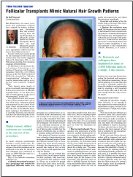Densitometry Makes Cover of Hair Transplant Forum International
 The lead article in the March/April 1997 issue of Hair Transplant Forum International focuses on the latest tools available for assessing whether or not a person experiencing hair loss is a good candidate for hair transplant surgery.
The lead article in the March/April 1997 issue of Hair Transplant Forum International focuses on the latest tools available for assessing whether or not a person experiencing hair loss is a good candidate for hair transplant surgery.
Dr. Bernstein uses the techniques of densitometry and video-microscopy to analyze the scalp under high-powered magnification. This gives the doctors vital information for making decisions about whether patients are candidates for hair transplant surgery.
Densitometry Makes Cover of Hair Transplant Forum International Read More »

 The Trustees of Columbia University have named hair transplant pioneer Dr. Bernstein Clinical Professor of Dermatology. This promotion was based on Dr. Bernstein’s teaching, lectures, research, original scientific papers, and outstanding patient care.
The Trustees of Columbia University have named hair transplant pioneer Dr. Bernstein Clinical Professor of Dermatology. This promotion was based on Dr. Bernstein’s teaching, lectures, research, original scientific papers, and outstanding patient care. Bernstein Medical – Center for Hair Restoration has moved to a new, state-of-the-art facility in mid-town Manhattan. The office is centrally located in the Park 55 building at 110 East 55th Street.
Bernstein Medical – Center for Hair Restoration has moved to a new, state-of-the-art facility in mid-town Manhattan. The office is centrally located in the Park 55 building at 110 East 55th Street.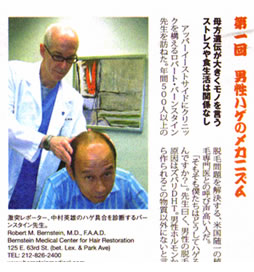 NY Japion — a weekly newspaper in the Japanese language, published in the New York tri-state area, and distributed for free in the Japanese community — has featured Robert M. Bernstein, MD, in their series on hair loss in men and women.
NY Japion — a weekly newspaper in the Japanese language, published in the New York tri-state area, and distributed for free in the Japanese community — has featured Robert M. Bernstein, MD, in their series on hair loss in men and women.  Robert M. Bernstein, MD has been selected as one of New York Magazine’s “Best Doctors” for the seventh year in a row.
Robert M. Bernstein, MD has been selected as one of New York Magazine’s “Best Doctors” for the seventh year in a row.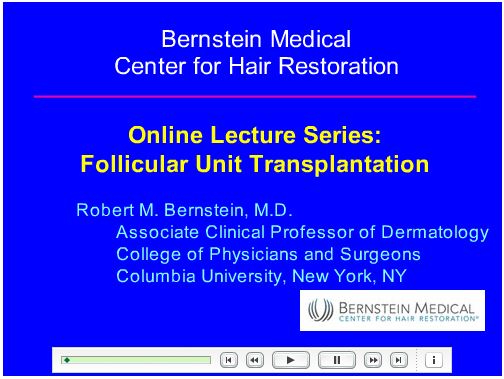
 Dr. Bernstein, a renowned teacher, lecturer, and surgeon, is bringing his state-of-the-art hair restoration techniques directly to patients. His lecture on Follicular Unit Transplantation (FUT) includes a historical review of hair transplant techniques, from the out-dated “hair plugs” and “cornrows” to refined FUT procedures. Watch the lecture to see images of surgical tools, illustrations of surgical techniques, and before and after patient photos.
Dr. Bernstein, a renowned teacher, lecturer, and surgeon, is bringing his state-of-the-art hair restoration techniques directly to patients. His lecture on Follicular Unit Transplantation (FUT) includes a historical review of hair transplant techniques, from the out-dated “hair plugs” and “cornrows” to refined FUT procedures. Watch the lecture to see images of surgical tools, illustrations of surgical techniques, and before and after patient photos. Moderator: How one can tell the difference between hair loss from hormonal imbalances and common baldness?
Moderator: How one can tell the difference between hair loss from hormonal imbalances and common baldness?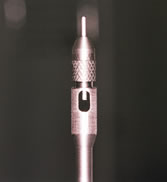
 In a recent article “The Secrets to Hiding Celebrities’ Hair Loss,” published in the New Jersey newspaper, The Bergen Record, author Abigail Leichman pondered the variety of techniques used by celebrities to battle hair loss.
In a recent article “The Secrets to Hiding Celebrities’ Hair Loss,” published in the New Jersey newspaper, The Bergen Record, author Abigail Leichman pondered the variety of techniques used by celebrities to battle hair loss.  Follicular Unit Forum is unique in that it affords visitors an opportunity to anonymously ask questions about the “ins and outs” of hair transplant surgery, of those who actually have had the state-of-the-art Follicular Unit Hair Transplant procedures.
Follicular Unit Forum is unique in that it affords visitors an opportunity to anonymously ask questions about the “ins and outs” of hair transplant surgery, of those who actually have had the state-of-the-art Follicular Unit Hair Transplant procedures. “Dermatologic Clinics” is a hard-cover quarterly peer review publication with comprehensive, state-of-the-art information by experts in the field of dermatology. In a 2005 issue entitled “Advanced Cosmetic Surgery”, Dr. Bernstein is lead author of the article: “Follicular Unit Transplantation: 2005.”
“Dermatologic Clinics” is a hard-cover quarterly peer review publication with comprehensive, state-of-the-art information by experts in the field of dermatology. In a 2005 issue entitled “Advanced Cosmetic Surgery”, Dr. Bernstein is lead author of the article: “Follicular Unit Transplantation: 2005.” “Over the past 10 years we’ve developed a new procedure called follicular unit transplantation, where hair is transplanted exactly the way it grows,” said Dr. Robert Bernstein […] This new technique replaces the plugs — groups of hairs inserted into round holes in the scalp — used in the early days of hair transplant procedures. It is now known that hair grows in groups of one to four hairs.
“Over the past 10 years we’ve developed a new procedure called follicular unit transplantation, where hair is transplanted exactly the way it grows,” said Dr. Robert Bernstein […] This new technique replaces the plugs — groups of hairs inserted into round holes in the scalp — used in the early days of hair transplant procedures. It is now known that hair grows in groups of one to four hairs. Surgery of the Skin: Procedural Dermatology; published in 2005 by Elsevier-Mosby and Edited by Robinson, Hanke, Sengelmann and Siegel; is monumental work that covers the entire spectrum of dermatologic surgical procedures.
Surgery of the Skin: Procedural Dermatology; published in 2005 by Elsevier-Mosby and Edited by Robinson, Hanke, Sengelmann and Siegel; is monumental work that covers the entire spectrum of dermatologic surgical procedures.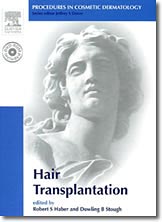 “Hair Transplantation” is a part of a series of medical textbooks — Procedures in Cosmetic Dermatology, published by Elsevier Saunders — which offers step-by-step, practical guides to performing cutaneous surgical procedures.
“Hair Transplantation” is a part of a series of medical textbooks — Procedures in Cosmetic Dermatology, published by Elsevier Saunders — which offers step-by-step, practical guides to performing cutaneous surgical procedures.  Julie Chen: Dr. Bernstein, I want to go through all the options that are available for women, but what is the difference between female and male hair loss option-wise. What can we do to treat it?
Julie Chen: Dr. Bernstein, I want to go through all the options that are available for women, but what is the difference between female and male hair loss option-wise. What can we do to treat it? Charles Gibson: Are there good candidates and bad candidates for this?
Charles Gibson: Are there good candidates and bad candidates for this? Dr. Bernstein: When I first saw Ken in 1995. He still had the traditional plugs, and I would say on a scale of one to ten, he was maybe a seven, with ten being the worst. We performed a procedure called follicular unit transplantation where hair is transplanted in exactly the way it grows in nature, which are little tiny groups of one to four hairs.
Dr. Bernstein: When I first saw Ken in 1995. He still had the traditional plugs, and I would say on a scale of one to ten, he was maybe a seven, with ten being the worst. We performed a procedure called follicular unit transplantation where hair is transplanted in exactly the way it grows in nature, which are little tiny groups of one to four hairs.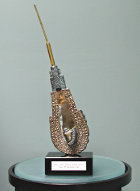 In giving Dr. Bernstein the 2001 Platinum Follicle Award, the President of the ISHRS said:
In giving Dr. Bernstein the 2001 Platinum Follicle Award, the President of the ISHRS said:  Dr. Bernstein received the 2001 HairSite.com award for excellence in hair transplantation. “Dr. Bernstein is one of the most sought after hair transplant surgeons in the United States. He is one of the very few in the industry who is still involved in scientific and clinically related hair restoration research while engaging in hair transplant practice.”
Dr. Bernstein received the 2001 HairSite.com award for excellence in hair transplantation. “Dr. Bernstein is one of the most sought after hair transplant surgeons in the United States. He is one of the very few in the industry who is still involved in scientific and clinically related hair restoration research while engaging in hair transplant practice.” The innovations Dr. Bernstein has described through his medical publications are now a part of history. In the Millennium Paper of the journal Dermatologic Surgery, a comprehensive history of the field of dermatologic surgery cites Dr. Bernstein as being one of the three physicians who played a leading role in hair transplantation in the 1980′s and 1990′s.
The innovations Dr. Bernstein has described through his medical publications are now a part of history. In the Millennium Paper of the journal Dermatologic Surgery, a comprehensive history of the field of dermatologic surgery cites Dr. Bernstein as being one of the three physicians who played a leading role in hair transplantation in the 1980′s and 1990′s. “We felt it was necessary to clearly define follicular unit hair transplantation and mini-micrografting cut to size,” explained Dr. Bernstein, Assistant Clinical Professor of Dermatology, College of Physicians and Surgeons, Columbia University, New York. “Follicular unit transplantation has many theoretical advantages… having standardized definitions of these hair transplantation techniques will allow us to make valid comparisons.”
“We felt it was necessary to clearly define follicular unit hair transplantation and mini-micrografting cut to size,” explained Dr. Bernstein, Assistant Clinical Professor of Dermatology, College of Physicians and Surgeons, Columbia University, New York. “Follicular unit transplantation has many theoretical advantages… having standardized definitions of these hair transplantation techniques will allow us to make valid comparisons.” The dissecting microscope takes some getting used to, but using it makes more efficient use of donor hair during follicular unit transplantation than magnifying loupes with transillumination, reported Dr. Robert Bernstein.
The dissecting microscope takes some getting used to, but using it makes more efficient use of donor hair during follicular unit transplantation than magnifying loupes with transillumination, reported Dr. Robert Bernstein. Dr. O’tar Norwood discusses the origin of follicular transplantation, and the influence that Dr. Bernstein’s research and publications have had on the evolution of the hair transplant procedure. Read a segment of the article:
Dr. O’tar Norwood discusses the origin of follicular transplantation, and the influence that Dr. Bernstein’s research and publications have had on the evolution of the hair transplant procedure. Read a segment of the article: Dr. Bernstein receives the Surgeon of the Month award given by the International Society of Hair Restoration Surgery. Dr. Bernstein introduced the concept of “follicular transplantation” in 1995 through a publication in the International Journal of Aesthetic and Restorative Surgery, where he recommended that in all hair transplant procedures the implants should consist of only the naturally occurring follicular units. The anatomic follicular units, seen clinically as the patient’s natural hair groupings, are different for each individual, and these differences should be reflected in the transplant plan. He has been a strong advocate of using follicular transplantation for the best possible cosmetic result, and has encouraged his colleagues to use this approach in his writings and lectures.
Dr. Bernstein receives the Surgeon of the Month award given by the International Society of Hair Restoration Surgery. Dr. Bernstein introduced the concept of “follicular transplantation” in 1995 through a publication in the International Journal of Aesthetic and Restorative Surgery, where he recommended that in all hair transplant procedures the implants should consist of only the naturally occurring follicular units. The anatomic follicular units, seen clinically as the patient’s natural hair groupings, are different for each individual, and these differences should be reflected in the transplant plan. He has been a strong advocate of using follicular transplantation for the best possible cosmetic result, and has encouraged his colleagues to use this approach in his writings and lectures. I just returned from visiting Dr. Bob Bernstein in New York, and was impressed with his operation and even more impressed with his thoughts, observations, and insights into hair transplant surgery. He applies scientific methods to his work, is academically honest, and has an almost eerie instinctive knowledge of hair transplant surgery. Of course he has Dr. Bill Rassman to work with, but it is still remarkable. Dr. Bernstein is best known for introducing follicular transplantation to hair transplant surgery, an idea Bob Limmer has been pushing for ten years with the use of the binocular microscope, but no one would listen to him. Dr. Limmer, however, never used the term follicular transplantation. Using the microscope, you automatically dissect the follicular units. It can’t be avoided if done properly.
I just returned from visiting Dr. Bob Bernstein in New York, and was impressed with his operation and even more impressed with his thoughts, observations, and insights into hair transplant surgery. He applies scientific methods to his work, is academically honest, and has an almost eerie instinctive knowledge of hair transplant surgery. Of course he has Dr. Bill Rassman to work with, but it is still remarkable. Dr. Bernstein is best known for introducing follicular transplantation to hair transplant surgery, an idea Bob Limmer has been pushing for ten years with the use of the binocular microscope, but no one would listen to him. Dr. Limmer, however, never used the term follicular transplantation. Using the microscope, you automatically dissect the follicular units. It can’t be avoided if done properly.
